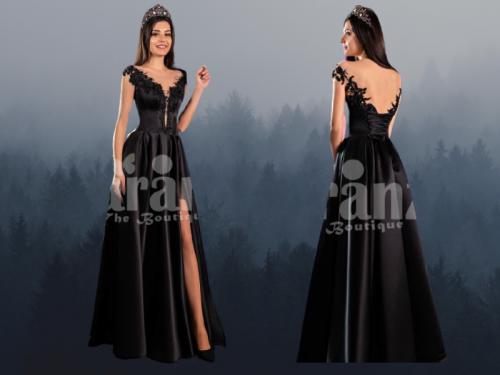Evolution of evening dresses for women from early European courts

An evening dress for women refers to a long, flowing gown. The fabric of the dress is likely to vary between satin, organza, chiffon, velvet and others. As such silk is one of the most popular fabrics in making this particular variety of clothing merchandises. Many people mistakenly use the terms ball gown and evening gowns interchangeably. But from technical aspect they are not exactly the same.
An evening gown is simpler and it can be just any silhouette including A-line, sheath, mermaid or trumpet-shaped along with a dropped waist. On the other hand a ball gown should have a well-fitted bodice and a full skirt.
The transformation
Court dresses of yesteryears gradually transformed to evening gowns of today. As you may have guessed correctly, this range of dresses originated in the royal courts of Europe. The 15th century Burgandian Court under the stylish and tasteful ruler Philip the Good bears the earliest account of court dresses for women.
In the earlier times court dresses were most designed from wool. it was a popular trend for women from royal lineages to add a train to their kirtle while attending any regal event. Plush fibers and fabrics were very costly back in those days. Only the nobles could afford spending that kind of money. Social status of an individual invariably reflected in the clothing of the person.
However all these time tested and rigid ranking systems, imposed the erstwhile society, were washed down with the dawn of Renaissance. As the barriers were lifted people, who could afford never backed out from displaying their wealth and affluence through their dresses. These people were mostly wealthy merchants, who enjoyed considerable clout at various European courts.
People living across the Mediterranean belt mastered the art of weaving by the 1400s. As a result silk was a very popular fabric in the region. But it was very expensive; only the affluent section of the society could afford silken clothes and garments. In other words this implies that dresses for attending royal balls and other regal festivities were usually crafted from silk and no other fabric.
Furs were a premium item even in those times. Those expensive silken clothes were trimmed fur and the combination of two extremely costly components used to reveal the social status and ranking of the wearer.
So now you know how interesting the history of origin of women’s evening dresses is. Until now French connection to the history has not been disclosed. As such it occurred a little later. Royal courts in Europe were exceptionally vibrant in the 16th and 17th century with music, art and literature. This environment contributed heavily in developing of formal dressing for women. All these developments reached a brand new peak inside the Italian renaissance courts. But in course of time the focus of Europe shifted to the court of the French emperor Louis XIV.
Thanks to the French influence the design of the court dresses underwent changes. The dresses included tight bodice, long trains, draped skirt, full sleeves and embroidered lace to name a few. Delicate choice of the French is well-known around the world and their choice of fabrics was no exception. They relied more on rich silk weaves including taffeta, satin and velvet.
The term ball gown or evening gown started to be used much later in the late 18th century. By this time the French revolution was over and the Bastille had fallen. At this stage wealthy merchant class frequently hosted parties at their lavish villas. Distinguished ladies attending those parties presented themselves in dresses with short sleeves, low neckline, excessive embroidery and fabric.
As the times changed, the lifestyle changed too. Thus to stay abreast with the changed lifestyle women’s party dresses to changed in look and design
Post Your Ad Here
Comments